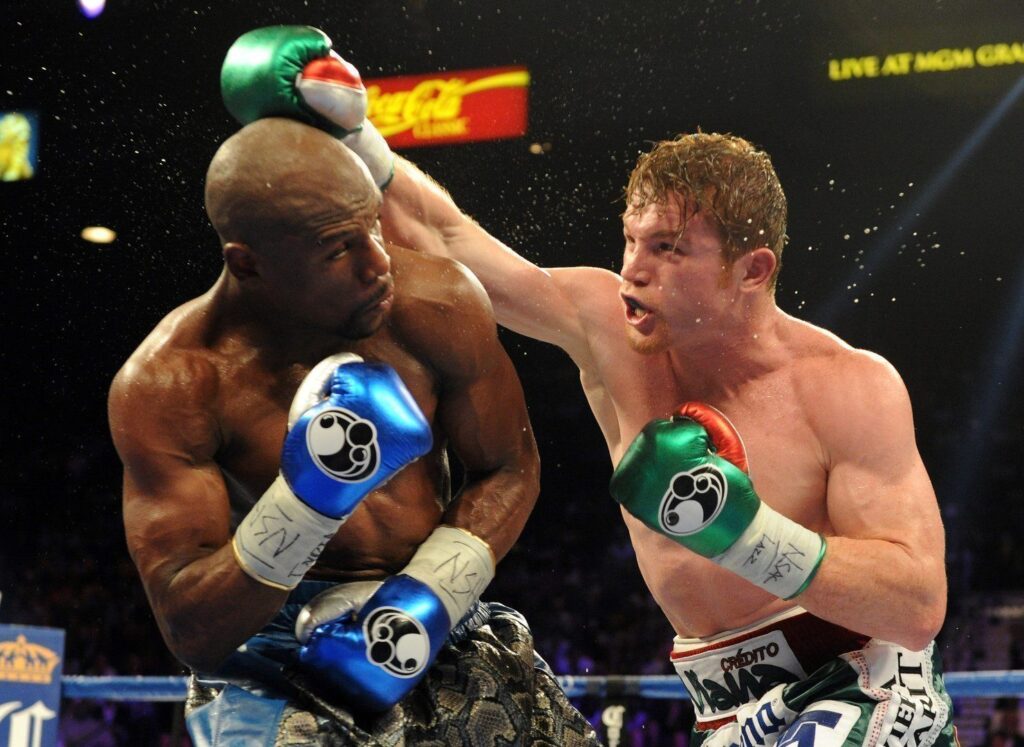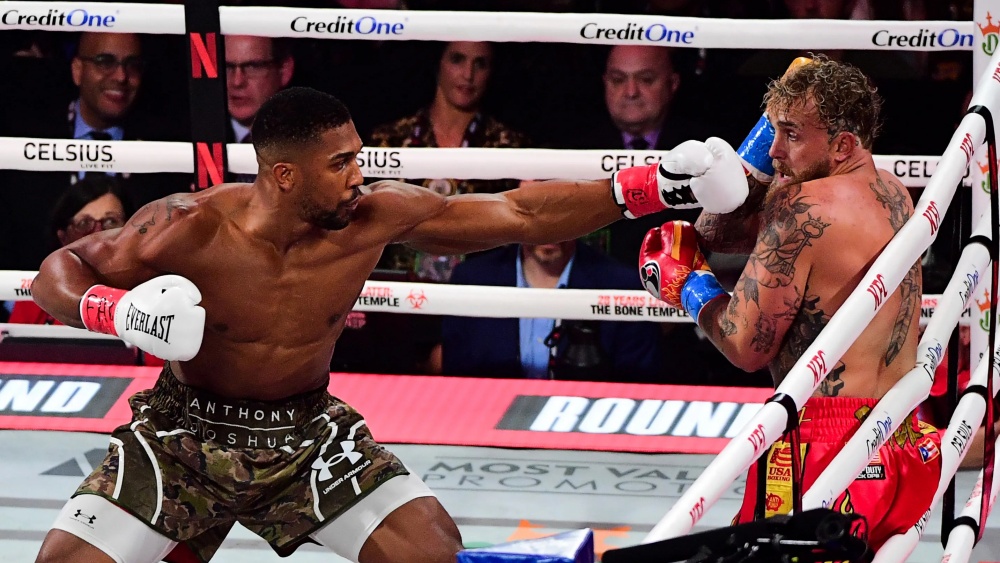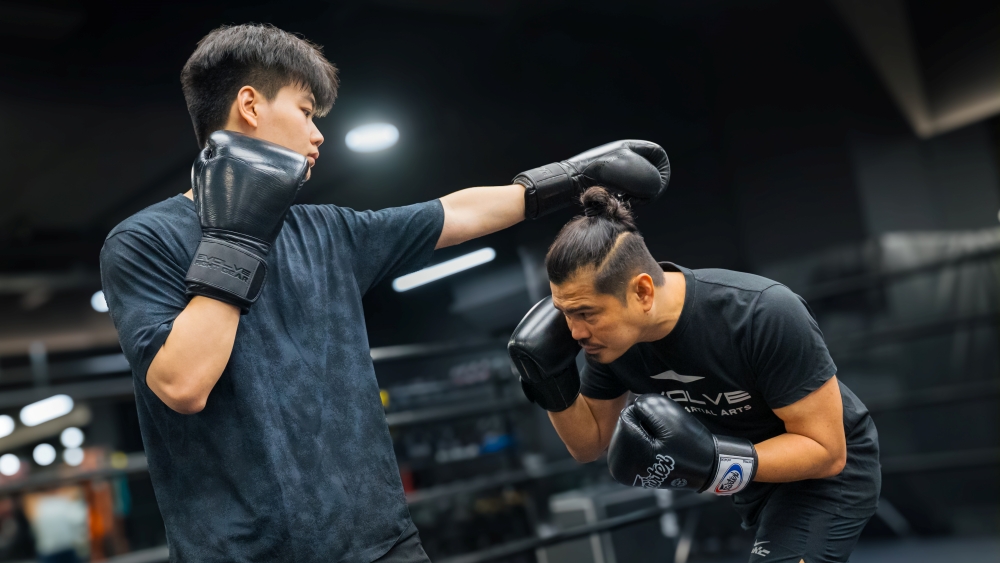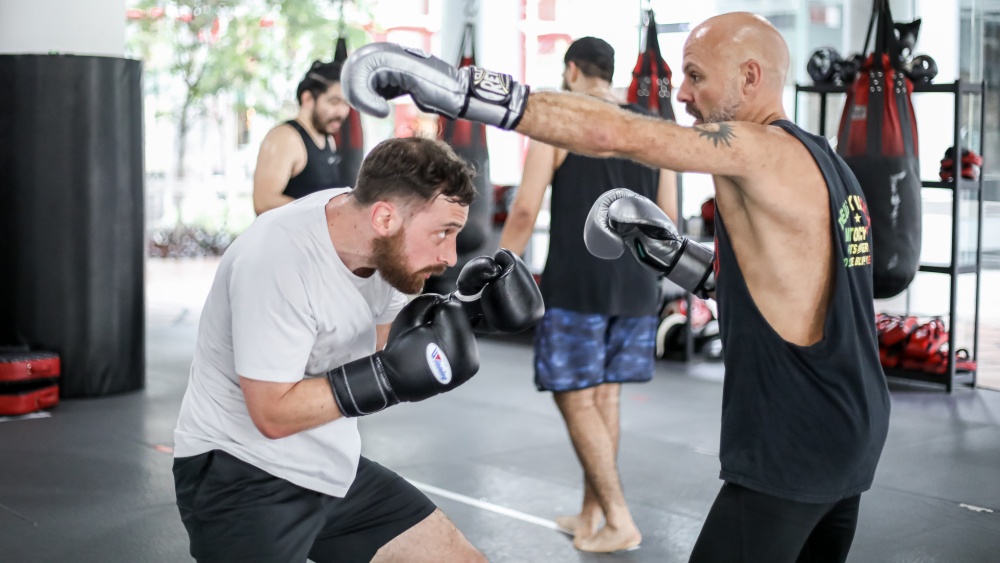The only thing standing in between a boxer and getting knocked out by his opponent is his defense. A fighter will use a guard to avoid and block punches while still allowing him to strike his opponent. No matter how agile and technically skilled a boxer is, he/she must have a great guard that allows him or her to use his or her offensive skills while defending strikes at the same time.n
Today, Evolve Daily shares the different guards you will learn/encounter in your boxing journey:
The Basic Guard
Don’t be fooled by its name — the basic guard is one of the simplest and most effective guards a boxing student must learn. For aggressive fighters always looking to attack, the basic guard provides a great platform to attack and defend from. Boxer-punchers such as multiple-time boxing World Champion Manny Pacquiao and Marvin Hagler use the basic guard, perfect for launching their flurries.
How To Do The Basic Guard: Hold your left arm a bit further out from your face and lower it slightly. Your right arm should be relaxed and held a bit lower as well. Keep your chin down and eyes forward.
Pros: Your hands are at the perfect height to launch attacks and defend them.
Cons: Your hands and head should be very active — work on slipping and parrying punches. The lowered hands will leave your head exposed.
The Peek-A-Boo Guard
Most famously utilized by multiple-time Boxing World Champion Mike Tyson, the peek-a-boo guard requires the boxer to put his hands in front of his face. This guard offers the most protection out of all of the guards, while still providing full access to all defensive and offensive techniques. As a beginner, this is one the first guards that you will learn.
How To Do The Peek-A-Boo Guard: (for orthodox stance) Raise your left arm up until it rests on your left cheekbone. Your right fist rests on your right cheekbone, slightly lower than your left arm. Hold your elbows tight to your body and tilt your head forward with your chin to your chest. Your forearms must be straight up, protecting your jaw, neck and upper chest. Thus, you create a wall with your fists and forearms that you can hide behind and open to throw a punch.
Pros: Great for defending against jabs and shots to the head.
Cons: Obstructs your vision, very predictable.
The Cross-Armed Guard
Considered to be the best guard against head damage, the cross-armed guard was used by boxing legend Archie Moore to set up devastating counter punches. He called it “the lock”, a defensive shell that has its origins in bare-knuckle boxing. It places higher emphasis on stopping straight punches, protecting the jaw, nose, and mouth.
How To Do The Cross Armed Guard: Cross your hands, with your lead hand protecting your rear jawline and your rear hand protecting your front jawline.
Pros: Only the hardest part of the skull (the dome) is exposed. You also have better peripheral vision compared to using a higher guard.
Cons: It could be difficult to counterpunch from this position.
The Philly Shell/ Shoulder Roll
A variation of the cross-arm guard, the philly shell, utilizes a fighter’s shoulder to deflect punches while the other arm blocks and counters. It is an advanced guard that is suitable for counterpunchers because it gives you just enough coverage so you can freely move your arms to attack. Great counterpunchers such as Floyd Mayweather Jr., Sugar Ray Leonard, and James Toney are known for their utilization of the philly shell.
How To Do The Philly Shell: (orthodox) Place your lead arm across your torso between your belly button and chest while your hand rests on the opposite side of your torso. Your back hand is placed on the side of your face while your lead shoulder is tight against the side of the face.
Pros: You’re in a perfect position to counter punch, allowing you to quickly switch from defense to offense.
Cons: You must be athletic and well conditioned to effectively execute this style because of the constant movement required. When you are stationary, you become prone to attacks, especially jabs on the exposed shoulder.
Which Guard Should You Use?
After practicing each guard on the heavy bag, you can utilize them in sparring. You’ll find that you gravitate to a certain guard more than others because of your style (counterpuncher, swarmer, etc). You’ll also realize that you may need to use different guards against different opponents. Start with one guard and you can eventually adapt it to your style after enough practice.
You may also like:

















